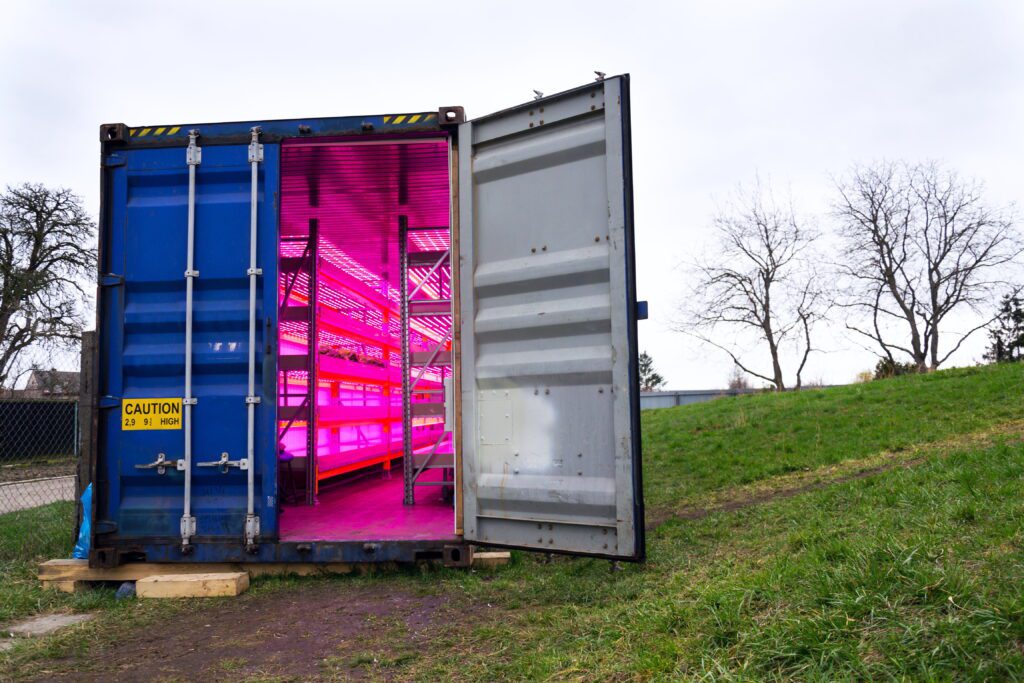Shipping containers, also known as Conex boxes or simply containers, are large, sealed, and reusable metal boxes used to transport goods by truck, vessel, or rail. They’re built to withstand transport pressure and are designed to be filled or emptied quickly, facilitating the carriage of goods without intermediate reloading.
The modern shipping container was first developed in the 1950s by Malcolm McLean, an American trucking entrepreneur. He revolutionized the shipping industry by inventing a system of containerization that allowed cargo to be quickly and efficiently loaded and unloaded using cranes.
This system, known as intermodalism, provides for the same container loaded with goods at its starting point to be transported by road, rail, and sea to the final destination without the goods needing to leave the container.
Nowadays, shipping containers are an integral part of global trade and have a wide range of industrial uses beyond their traditional use in shipping and logistics.
Read on to explore the various industrial uses for shipping containers.
- Agriculture
Shipping containers have a wide range of potential uses in the agriculture industry. One widespread use for hydroponic farming involves growing plants in a nutrient-rich solution instead of soil. Containers can be easily converted into hydroponic farms, and their tight seals make them ideal for maintaining the perfect temperature and humidity levels needed for optimal plant growth. They’re outfitted with technology to keep optimum growing conditions.
Furthermore, year-round production of containerized food can provide communities with enhanced food production capabilities. Vertical farming is on its way to becoming a viable alternative to conventional agricultural practices, enhancing sustainable food production for the growing world.
- Shipping And Logistics
Shipping and logistics are among the most common industrial uses for shipping containers. These containers can transport goods by truck, ship, and train, making them an efficient option for international trade.
Containers can be loaded onto cargo ships, transporting them to ports worldwide. They can be loaded onto trucks or trains for their final destination. This intermodal transportation method allows for a seamless and efficient movement of goods, as the containers can quickly be transferred between different modes of transportation without the need to unload and reload the cargo.
Using shipping containers in international trade dramatically reduces the risk of damage or loss of goods during transportation. These containers are designed to withstand harsh weather conditions and are stackable, allowing maximum use of space on cargo ships.
- Construction
Construction is another growing industrial use for shipping containers. These versatile and durable containers can be used as building blocks for various structures, including homes, offices, and warehouses.
Shipping containers are made of heavy-duty steel and are designed to withstand harsh weather conditions, making them ideal for use in construction. They can be easily transported to a building site and stacked on top of each other to create multi-story buildings. They can be cut and welded together to form larger structures or customized floor plans.
Using shipping containers for construction also offers several benefits, including sustainability and affordability. Containers are reusable, reducing the need for new building materials and the environmental impact of producing new structures. Furthermore, repurposing shipping containers for construction can significantly decrease the cost of building a new facility.

- Manufacturing
Manufacturing is another industrial use for shipping containers. They can be converted into factories or workshops, allowing companies to set up production facilities in various locations.
Shipping containers can be easily modified to accommodate industrial equipment and machinery, making them suitable for a wide range of manufacturing processes. They can also be equipped with climate control, insulation, and ventilation systems to ensure a comfortable working environment for employees.
In addition, containers can be transported to remote areas where traditional brick-and-mortar structures may need to be more feasible and cost-effective to build. It can be handy for companies operating in resource-rich regions, such as mining and oil and gas industries, where there may be a need for production facilities close to the source of raw materials.
- Education And Training
Education and training are crucial components of any industry, and shipping containers can significantly provide cost-effective and flexible solutions for these needs. By converting shipping containers into classrooms, training facilities, and labs, industries can easily outfit them with the necessary equipment and furniture.
The portability of shipping containers also makes them ideal for providing education and training in remote areas. They can be quickly transported to these areas, providing students and workers with access to necessary resources and equipment. Moreover, containers are highly efficient, requiring fewer system resources than traditional or hardware virtual machine environments. This leads to increased efficiency and utilization of computing resources.
Conclusion
Shipping containers have proven valuable in various industries, offering cost-effective and sustainable solutions. As technology and design continue to evolve, the potential for shipping containers in multiple sectors is expanding.









